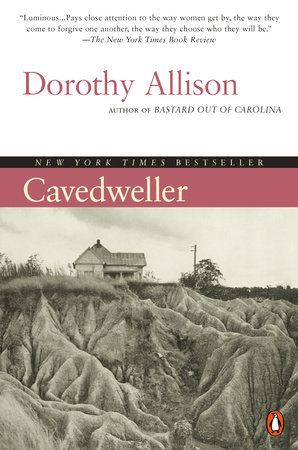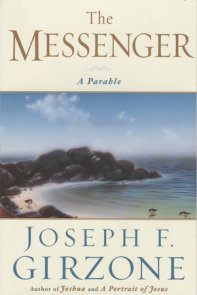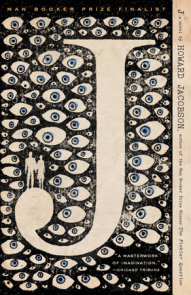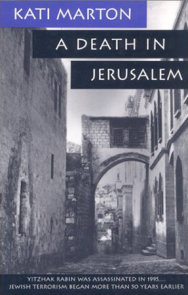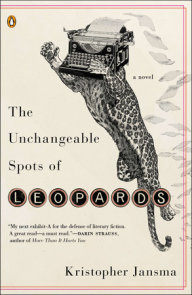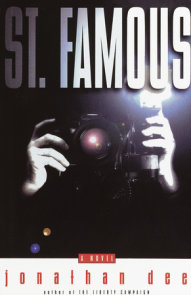READERS GUIDE
Questions and Topics for Discussion
INTRODUCTION
The Village Voice has called her “a hell of a writer-tough and loose, clear and compassionate.” George Garrett, author and critic who reviewed Bastard Out of Carolina for The New York Times Book Review wanted to “blow a bugle to alert the reading public that a major new talent has arrived.” Critics have likened her to William Faulkner, Flannery O’Connor and Harper Lee, naming her the first writer of her generation to dramatize the lives and language of poor whites in the South. “She has an all-encompassing knowledge of what it’s like to be the other, the outsider,” says Studs Terkel. Garrett agrees: “It’s as if the people in Dorothea Lange photographs, in the work of Margaret Bourke-White and Walker Evans, were able to speak.” But with a dead-center look that says “Don’t mess with me, honey. I’m liable to pour gravy on you,” Allison defies easy characterization, as one writer for The New York Times put it. And she likes it that way.
Part gospel singer, part country preacher, Allison often jokes that as a girl she wanted to be Janis Joplin. She has a wardrobe full of rhinestone-studded leather jackets and a desk drawer full of family snapshots. She’s a mean shot with a rifle, and her language is always dead-on: lush, beautiful, and brutal. “Dorothy sees everything”, says Jewelle Gomez, the poet and novelist.
Allison has spent her entire life telling forbidden stories, pulling her best fiction out from the edge of terror and the courage to heal. In Two or Three Things I Know for Sure, a short memoir she published in 1995, Allison writes,
Where I was born —Greenville, South Carolina—smelled like nowhere else I’ve been. Cut wet grass, split green apples, baby shit and beer bottles, cheap makeup and motor oil. Everything was ripe, everything was rotting. Hound dogs butted my calves. People shouted in the distance; crickets boomed in my ears. That country was beautiful, I swear to you, the most beautiful place I’ve ever been. Beautiful and terrible.
Allison wants the hard and terrible stories, she demands them from herself. And her readers wait for them.
Readers might call Cavedweller the blazing daughter of Bastard Out of Carolina, but even that will not do justice to the mystical story and landscape, the world of family, and the secret-filled South in which Allison has set in her new novel. Allison begins her absorbing saga about Delia Byrd and her three daughters with a simple sentence: “Death changes everything,” and by story’s end, Allison has uncovered the complicated cycles of sinning and atonement along an enormous expanse of births, deaths, and rebirths alongside husbands, lovers, families, friends. Young, beautiful Delia flees a whisky-soaked, violent man who loves her passionately and beats her within an inch of her life. On a dusty sideroad she meets Randall, a musician on his way to the top, and deserts her two baby daughters in Cayro, Georgia, land of biscuit franchises and backwoods Baptists. Randall and Delia form the band Mud Dog, and together they write music, hit the road, and have a child, Cissy. But even while pasting together a life of soul, drugs, truck stops, vodka shots, and credit card bills in the glitter of Los Angeles, Delia doesn’t care about fame or money and cannot live with the fact that she left her two girls behind. When a motorcycle accident kills Randall, Delia quits the bottle and takes Cissy on a midnight drive-through mission back to reclaim her life (and reconnect with her original sin) in Georgia, where folks remember her as “that bitch [who] ran off and left her babies.”
Delia fights off the urge to drink as she suffers the scorn of her family and a bitter community who despises her for what she did and who she became. She moves back in with Clint Windsor, her cancer-stricken husband, and offers to care for him on his deathbed if he will allow her to reclaim her two daughters, Amanda, 15, and Dede, 12, from their Bible-thumping grandmother. Evangelical Amanda takes after her grandma Windsor, and pursues the Lord and anti-abortion activism with the manic fervor of a zealot. Wild and slim Dede is every man’s dream, redneck or not. Though not into Jesus, she is as passionate as her sister Amanda, and dreams of getting behind the wheel of a big truck and heading down the road, any road, out of Georgia. Finally, there’s tough yet vulnerable Cissy, who finds her obsession in the dank sport of caving, where she finds strength to grab her future as she scrapes through the caves of Southern Georgia, through Paula’s Lost and Little Mouth. All three girls are something to behold as they grow up into enraged yet empowered women. It is Delia, though, who is the real “cavedweller” —a woman whose deep past is gradually mapped and explored, and who is able to remake herself and her family through what she discovers. Led by the example of their determined mother, each daughter opens her heart a little wider to others and finds her own way in the world.
ABOUT DOROTHY ALLISON
Dorothy Allison was born in 1949 in Greenville, South Carolina, to a fourteen-year-old unwed mother. The only father figure she ever knew was a violently abusive man who used her mother’s desperate desire for respectability to tie the terrified family to him. Though it was Allison’s mother who placed her daughter in these precarious situations by not challenging her husband, Allison credits her as an inspiration. While the Greenville community disdained Allison for being poor and illegitimate, Allison’s mother insisted her child was bright. She kept a jar of money she called the college fund, and though she had to empty it on several occasions and Allison’s college was paid for by a National Merit Scholarship, just the presence of that jar convinced Allison that she had a right to excel.
The first of her family to graduate high school, Allison went on to get a bachelor’s degree from Florida Presbyterian College and a master’s from New York’s School of Social Research. Allison credits emerging feminism with much of her redemption. Suddenly, getting angry did not make her a misfit, and the movement gave her the strength to reclaim her self from years of put downs and abuse.
When she began her writing career, Allison kept close to the gay and feminist presses, distrusting the establishment and believing that “literature was written by men, judged by men.” In 1988 Firebrand Press published Trash, a book of short stories, that started to win Allison notice. This was followed by The Women Who Hate Me: Poetry, 1980-1990, which secured Allison’s stature as a respected talent within the gay and lesbian community.
When Bastard Out of Carolina was published by Dutton in 1992, Allison achieved mainstream success. Bastard was greeted with rave reviews from the Village Voice, the San Francisco Chronicle, and The New York Times Book Review, and nominated for the National Book Award. Allison returned to a small press with Skin: Talking About Sex, Class and Literature, a critically acclaimed collection of essays.
In 1995, she published a short memoir, Two or Three Things I Know for Sure, using text and family photographs. In March 1998, Allison’s most ambitious work yet was released. Cavedweller is an epic novel that chronicles the trials and victories of four strong women and the opportunities they wrest from the unforgiving terrain of small town Georgia.
In addition to her own books, Allison has contributed to many publications, ranging from The New York Times to Harpers andAllure. Allison lives in Northern California with her partner and their son, and continues to pursue “the thing all writers want—for the world to break open in response to my story…The same thing I have always wanted.”
Praise
“Impassioned prose…superbly salty dialogue…an altogether wonderful second novel.”
—Kirkus Reviews
Related Titles
Bastard Out of Carolina by Dorothy Allison
This autobiographical novel about a young girl in the rural South facing abuse and betrayal won high critical acclaim and a National Book Award nomination upon its release in 1992. The power of Bastard Out of Carolina is simultaneously narrative, emotional, and political. “The novel is mean,” Allison says, “meant to rip off all that facade of imagination and lies we place around sexual violence and children.”
The backdrop of this tale is Greenville, South Carolina, and its narrator is “Bone” Boatwright, a twelve year old trying to remember and comprehend the events that led to her being abandoned by her mother. Bone and her sister Reese are surrounded by colorful characters, most of them relations. Her uncles are feared by men and adored by women, while her aunts are long-suffering yet defiant. Her grandmother is a strict matriarch who loves her brood but “always loved her boy children more.” While Anney Boatwright and her two girls face many trials —Bone’s illegitimacy, the death of Reese’s father—their real trouble starts when Anney marries Glenn Waddell, the black sheep of a prominent family, whose most outstanding characteristics are his uncontrollable temper and oversized hands. Though Daddy Glenn at first offers the girls sugary reassurances, when Anney miscarries his child he turns against them. Instead of lashing out at his wife, Glenn chooses the weakest target, Bone, and tears the family apart by claiming to need Anney’s love and care more than her own young daughters do.
Even as Bone suffers immense hardship, she is not alone. Fierce determination and a loving extended family help her through, and though our heartsache to think of what Bone must bear, her perseverance leaves us hope for her future.
Allison says she designed the book so that the reader meets all these people —Bone, Anney, and Glenn, the wild uncles and long-suffering aunts —and becomes gradually drawn into their world through the character of Bone. “You see what happens—Daddy Glen’s cruelty, the sexual violence —only through the filter of Bone trying to survive. It took me a long time to get it right. About 10 years.”
The Showtime movie based on the book, directed by Anjelica Huston and starring Jennifer Jason Leigh, was funded by Ted Turner, but he pronounced it too graphic to be shown on his network. In several states, Bastard has been banned from classrooms and school libraries. Most recently, the book was distributed to Maine high-schoolers by private citizens, in protest of the Maine Supreme Court’s November 1997 decision that allowed the schools to continue their ban of the book.
Two or Three Things I Know for Sure by Dorothy Allison
Allison’s short memoir interweaves reminiscences, observations and family snapshots. It starts as an ode to the Gibson family, especially its women —Allison’s aunts, mother, grandmother, sisters, and cousins —who broke down young and aged quickly, but somehow kept going and, refused to run away. Looking back, Allison acknowledges “The women I loved most in the world horrified me. I did not want to grow up to be them.”
It is from aunt Dot that the title phrase comes, “Lord, girl, there’s only two or three things I know for sure,” and Allison uses it to punctuate her stories, to ease us from one bitter or wistful recollection to the next. Her world is never pretty or secure, but she is able to transform it through revelations from herself and other people, some sought and some serendipitous. She examines both the detrimental and redeeming power of storytelling and shows how she managed to wrest her past and her present away from those who had hurt her and from those who refused to acknowledge the truth.
The memoir is also the basis of a short documentary film, Two or Three Things But Nothing for Sure, available through the New York City-based educational distributor Women Make Movies.
AN INTERVIEW WITH DOROTHY ALLISON
What would you define as the starting point of your career as a writer? Was there a certain experience or occurrence that revealed your vocation to you?
As a child I was a talented liar with a gift for telling horrible scary stories to my sisters and cousins but I did not begin to write stories down until adolescence. My first “written” story came about after I fell madly in love with The Fighting Prince of Donegala Disney Movie about an Irish revolutionary in the army of Robert the Bruce. It was a fairly awful movie but I made it into a ninety page play in verse that my mama thought perfectly wonderful. My verse version was fairly awful too, but it started me off writing poems and stories. For me, writing was, and is, sneaky. It teases the truth out of you, and in my poor and violent family the truth was terribly dangerous. For a decade I burned every story and journal entry I wrote, lighting fireplaces with poems and building bonfires with fragments of novels. Only when I discovered the women’s movement did I begin to write stories again in earnest, and then only with the help and encouragement of other women. Even then the terrible drive to hide and destroy what I wrote almost overcame me. It was my women friends who stopped me. “You don’t have to burn what you write,” they told me. “Or, you can burn it later, just don’t burn it right now.” Their support got me through that first year of not burning my writing, and made possible all that followed. Twenty years later I have a bookshelf fully of journals, cabinets of stories and a series of novels but without that first woman putting her hand on mind and saying wait, stop, you don’t have to destroy your own work, I would have nothing but ashes scattered in every city I have ever lived.
Who are your favorite authors and strongest influences? Are they the same?
Flannery O’Connor is one of my all time favorites, and she is a powerful influence. As a Zen Baptist, I can’t quite match her Catholic intensity but what she does for the middle-class southerner, I would love to do for the working class. I also adore James Baldwin, Tennessee Williams, Carson McCullers, Zora Neale Hurston and the whole critical tradition of southern outlaw writers the queer, disenfranchised and expatriate novelists whose books I read as a girl. These days I make a point of reading and collecting contemporary women and working class novelists writers like Doris Betts, Jane Hamilton, Jim Grimsley, Sapphire, Alan Gurganus, Terry McMillan, Amy Bloom and Jewelle Gomez. Most of all I love poets Audre Lorde, Muriel Rukeyser, Ai, Adrienne Rich, Mark Doty, Sharon Olds, and Thom Gunn. When I go on tour, my greatest difficulty is the pile of small volumes of poetry I acquire at every stop. I keep shipping home boxes of books and dreaming of the day I can sit among the boxes and pour over books I have not yet read.
Did the critical acclaim and media attention that Bastard Out of Carolina received make it more pleasurable or more daunting to write Cavedweller?
I began Cavedweller before I had finished Bastard Out of Carolina which did change my life enough to make things like paying the bills much more easy and getting uninterrupted writing time more problematic. I began with Cissy, a child who hated her mother and felt herself alone in the world and who I knew had two sisters who had every reason to despise her just as she to hate them. I also began with a very powerful image of Cissy’s mother, the gifted and drunken Delia singing so powerfully she broke the hearts of all who heard her. I knew Delia was a woman whose sense of guilt was destroying her and who wanted to try one more time for her own redemption. If I had not had such a strong sense of these women, I would have crawled into a cave and never have written another novel.
It’s a fortunate thing these people get in my head and start talking so insistently. Otherwise I don’t know what I would do. I’ve got another pair in my back brain now almost drowning out the book I had already started. It will be interesting to see who shouts louder and gets their story told first.
Spanning four generations, Cavedweller is your most expansive work to date. How did the writing process differ?
Cavedweller is a wider, more expansive work written in third person and various voices, much more difficult to work out on the page than the first person, relatively straightforward Bastard Out of Carolina. But Bastard was written in spurts over a decade as I could manage the time to write, and the hardest part of finishing the novel was breaking up the short story form in which it was written to make it a true novel. Cavedweller was never written in short story form it was a large landscape to begin.
Cavedweller was also written in half the time it took to write Bastard in large part because I could do it full time (in between raising a child and traveling too much) rather than fitting it in after working at an exhausting day job. In many ways, Bastardmakes Cavedweller possible both in terms of buying me time to write and in what I was able to do with the women in the book. I learned so much in getting the Boatwrights down on the page, I knew better how to deal with the people of Cayro.
Finally, I have to say that Bastard was also written to a gospel soundtrack while Cavedweller is all rock and roll both in pacing and character. I use music to pin down my characters in my own mind playing the same records over and over as I work on particular characters or sections. By the time I finished Cavedweller, I had played so much of the rock and roll of the seventies, I was starting to write the lyrics and music for Delia’s band.
In an interview with San Francisco Focus, you mention an alternate ending to Bastard Out of Carolina in which Bone and her mother unite to kill Daddy Glenn. Though it felt good to write such an ending, you scrapped it because it would have ruined the book. Did you experiment with other, more tragic, endings for Cavedweller?
Lord yes! I tried to kill each of the daughters in Cavedweller death being such a great closing —but none of them would die.
Cavedweller takes place in small-town Georgia in the 80s and 90s, while Bastard Out of Carolina is set in the rustic South Carolina of the fifties, yet there seems to be little difference in the quality or pace of living. In the thirty or forty years since your childhood, how, if at all, has the rural South changed?
Completely and not at all. Television and shopping malls and community colleges make a big difference but people are intransigent.
Nolan Reitower stands out as a male who is kind and trustworthy. Was the character of Nolan difficult to create or sustain?
Nolan was a gift and I know half a dozen people who are a match for him, not the least of whom is the father of my son. It’s easier to write kind and trustworthy people when you have them in your life.
Caving is a fascinating hobby, and your accounts of both its pleasures and dangers are breathtakingly real. Have you explored caves similar to Paula’s Lost?
Twenty years ago when I lived in Tallahassee Florida I went caving in South Georgia with a small group of women just as stubborn and foolish as the women in Cavedweller. It was filthy, terrifying and completely exhilarating. I’d go again any time but my girlfriend won’t hear of it.
DISCUSSION QUESTIONS









